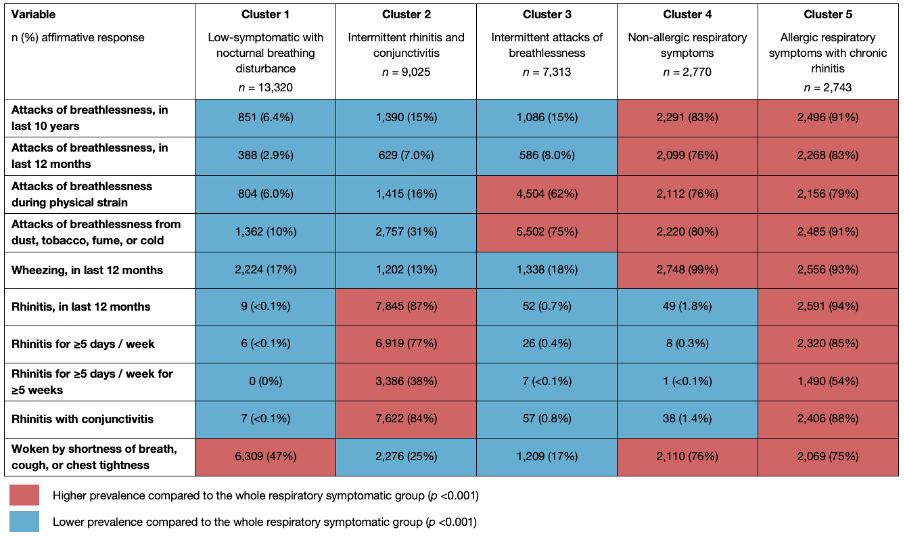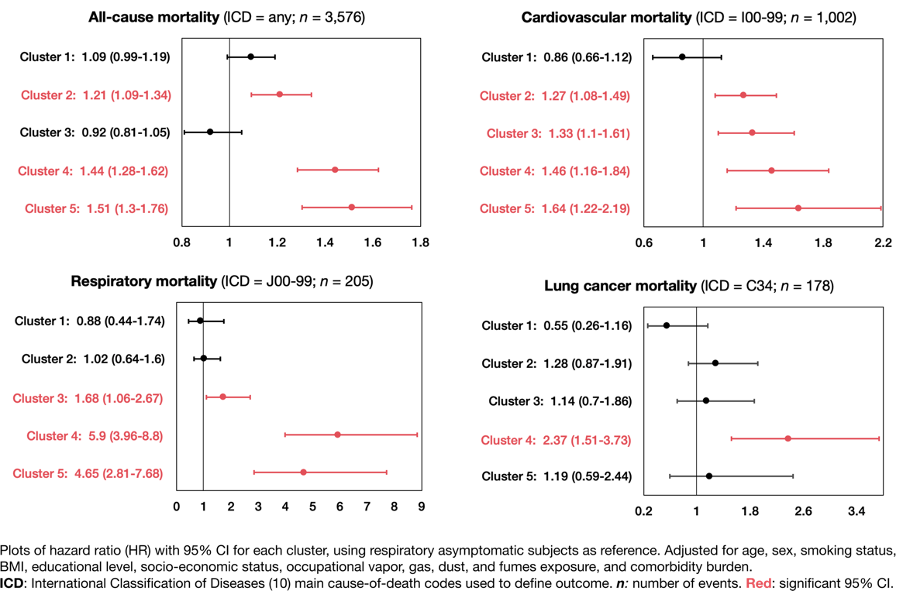Abstract
Background: Respiratory symptoms are common and are associated with adverse outcomes.
Aims: To identify respiratory symptom clusters in adults and assess relation to cause-specific mortality.
Methods: Questionnaire data from two Swedish population-based adult cohorts (N = 56,206) were linked to mortality register data (6-21 years follow-up). Based on the presence/absence of 28 respiratory symptoms, subjects with ?1 symptom were clustered using the CLustering LARge Applications algorithm. The hazard ratios for cardiovascular, respiratory, and lung cancer mortality were calculated using Fine-Gray model, asymptomatic subjects used as reference.
Results: Among the subjects reporting respiratory symptoms (63% of the study population), five clusters were identified (Figure 1). Adjusted cause-specific mortality analyses are shown in Figure 2.
Conclusions: Clusters with more respiratory symptoms had higher cardiovascular and respiratory mortality. The non-allergic respiratory symptoms cluster was also associated with higher lung cancer mortality.

Figure 1. Selected respiratory symptoms in the clusters.

Figure 2. Adjusted cause-specific mortality analyses.